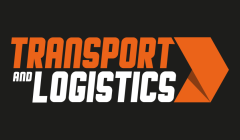Free delivery is something that we are all accustomed to – it is seen as something regular rather than remarkable. But ‘shipping’ has become an unhelpful catch-all term for a complex, global network of consumer logistics.
As costs rise, giants of the industry have increasingly charged more for their services, with both FedEX and UPS moving to a more expensive system of charging by weight, and Amazon removing free delivery for purchases under £10. Is this upward trend the inevitable future of shipping? And what are the true costs behind the ‘Add to Basket’ button?
Whilst free shipping is a significant expense for any business, it doesn’t just create costs – the increased affordability and availability of products can generate new revenue. Balancing the benefits of offering free shipping against the profit margins of the company is a key skill – effective supply chain strategy should be focused on finding the perfect middle ground between profitable thrift and profitable service performance.
But what are the three greatest areas of expense in this balancing act?
The Warehouse
In a time of huge consumer spending and expanding choice, warehouse space can come at a premium. For example, take the case study of Sao Paulo where, in 2011, warehouse space rapidly became more expensive than both London and Singapore due to a huge ‘consumer boom’, provoking fears of a massive, necessary investment in construction to meet demand.
This demonstrates the value, both societal and monetary, of a bespoke logistics infrastructure – vital to sustaining an affordable delivery culture, but demanding of significant and perpetual investment from both the private and public sectors.
The Packaging
Over the last decade, across the logistics arms of many industries, there has been a big drive towards reducing unnecessary packaging. Minimising packaging can save space and fuel during delivery, with the added bonus of being seen as ecological by customers.
But with smaller products, the cost of the packaging can often be more than the price of manufacture – this is unsustainable, both economically and ecologically, and is why many businesses, including Amazon, encourage multiple purchases to be packaged together. Finding low-cost, ‘near-to-neutral’ alternatives to traditional packaging
The Delivery
Fluctuating oil prices as well as the increasing cost and limited availability of freight transport services has driven a culture of instability to the heart of costing logistics. Of the many different costs of shipping, delivery is the most vulnerable to the peaks and troughs of the wider market – especially for small to medium sized companies without their own distribution network.
Given these significant and variable expenses, it is clear to see why fast, free delivery remains elusive for many consumers. But is it possible that innovations could lead to cheaper or free delivery in the future? Intelligent investment in a localised, sustainable and modern logistics infrastructure, from sustainable, networked warehouses to electric or biofuel vans, could reduce day-to-day running costs and save both money and resources in the long term – freeing up funds to subsidise cheaper products and delivery for customers.
The likelihood of this depends, of course, on how willing businesses are to invest in the most valuable delivery of all – a sustainable future.
Article written by John Reilly




